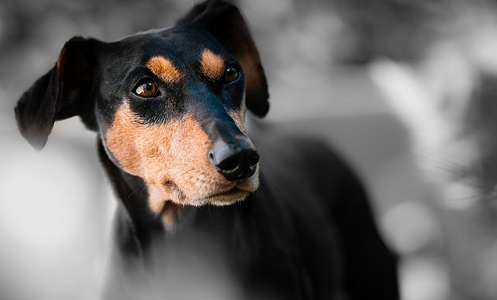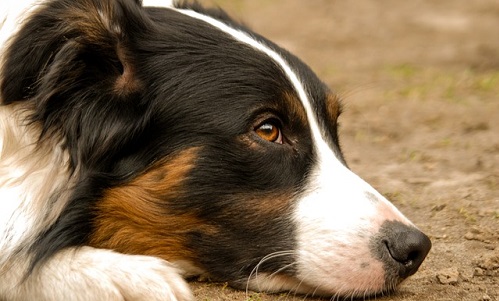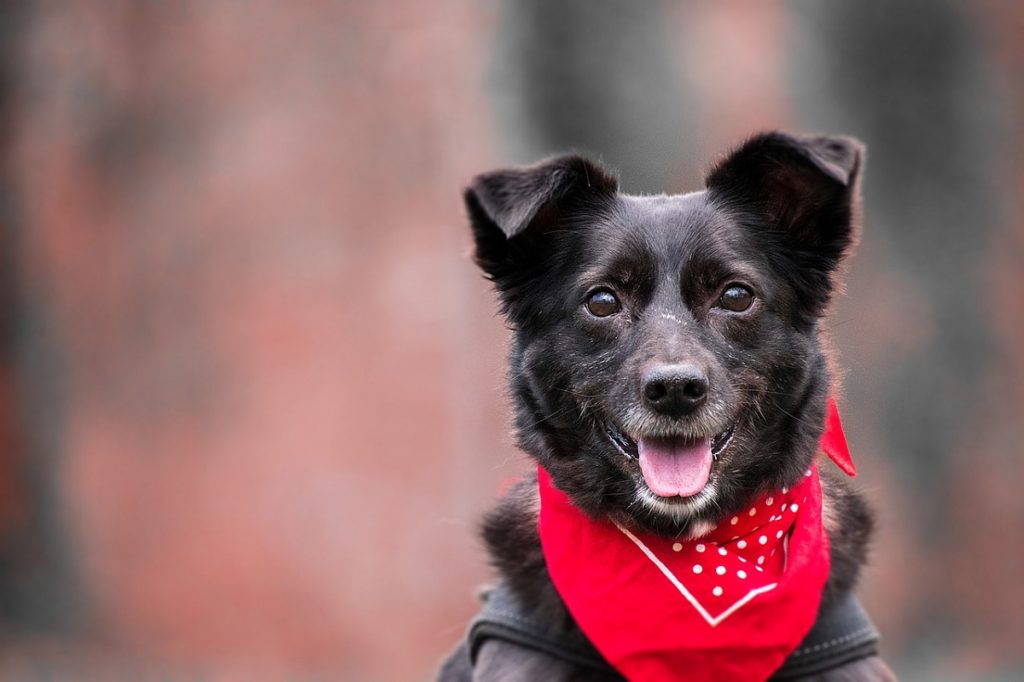Dogs are very similar to babies. Now, it sounds crazy, but it’s true. They like to investigate their surroundings, they are curious about the world around them, and they use their mouths to taste test anything that looks or smells intriguing. With all of these characteristics, it’s no surprise that choking is a major concern for dog owners everywhere.
Toys, food, a piece of trash, a random object they came across in the backyard, that plastic water bottle that fell down behind your bed three days ago: these are all examples of choking hazards that can seriously harm your loving four-legged companion.
In most cases, dogs act as miniature garbage disposals and everything that they put in their mouths usually ends up coming out the other end. However, sometimes dogs can choke and get objects lodged in their airway. When an emergency like this happens, do you know how to perform the Heimlich maneuver for dogs?
Most of us wouldn’t hesitate to perform such a maneuver on a person that was choking, but when it happens to your dog, it’s a little different. Because it’s different, you may hesitate if you don’t know what you’re doing. Knowledge is power, and knowledge also allows you to have a clear head. However, the Heimlich maneuver on dogs, though similar to what you would do for a human, does require a slightly different approach.
What to Do When Your Dog Chokes
 Keep in mind that when a dog begins to choke they will also start to panic. Just like in humans, panic and anxiety in dogs are natural reactions when you struggle to breathe. Therefore, it is important that you as the owner doesn’t panic when your pet is choking. Your dog can sense your emotions, and if he sees you stress, that will only make the situation worse.
Keep in mind that when a dog begins to choke they will also start to panic. Just like in humans, panic and anxiety in dogs are natural reactions when you struggle to breathe. Therefore, it is important that you as the owner doesn’t panic when your pet is choking. Your dog can sense your emotions, and if he sees you stress, that will only make the situation worse.
When a dog begins to choke, they may start to wheeze, gasp for breath, cough violently, paw at their mouth, and even present with bulging eyes. As soon as you witness your dog displaying any of these symptoms, wait a few seconds to see if he is able to dislodge the object on his own.
If he doesn’t dislodge it within a couple seconds, check your dog’s mouth and if possible, sweep the object out. It’s important that you be very careful in doing this, and proceed with caution so you don’t accidentally push the object deeper into your dog’s throat.
Forcing the foreign object further can cause damage to your pup’s throat bones or tear the tissues of the throat.
Approach Calmly
Approach your dog slowly and speak to him in a calm and soothing tone. Dogs who are afraid may bite even if they have never bitten anyone before.
Look Inside
Open your dog’s mouth by placing one hand on the top of your dog’s muzzle and the other hand on the bottom of your dog’s muzzle. Keep your index finger free so that you can use it to sweep inside your dog’s throat and move the object out. Look inside your dog’s mouth and see if you can get a visual of anything blocking the windpipe.
If you see the obstruction, you can try to reach it with your finger and remove it, but never just grab something because you feel something there. Dogs have little bones in their throat that help to support their tongue and if you mistake those bones for a foreign object and try to pull them out, you can cause serious damage to your dog’s throat and larynx.
If you can’t see what is blocking his airway, you also have to be careful not to push whatever it is further down your dog’s throat. Do not try to pull it out if it doesn’t remove itself easily. If the object is too big, you can also damage the tissues inside the throat as well. If you can’t remove the object with your fingers, then you’ll have to try performing the Heimlich maneuver for dogs or use the “tilt your dog method”. If your dog has fallen unconscious, start these steps immediately.
Tilt Your Dog
This action uses the force of gravity to help dislodge the object. If your dog is small, you can pick him up by his thighs. Make sure when you do this you keep his belly facing you. From there, gently shake the dog in an attempt to dislodge the object.
If you have a large dog, you can achieve the same effect by picking up your dog’s rear legs in a wheelbarrow fashion, with your dog facing forward. You can also try giving him a shake in this position. If this method does not work in dislodging the object, then you can move on and try the Heimlich maneuver.
It’s important that you only use the Heimlich maneuver on dogs in cases where you are certain your dog is choking on something because this procedure itself can cause additional injury if done incorrectly. Accidental damage can be done to a dog’s internal organs by using too much force, especially as your dog’s ribs are more flexible than humans.
 This means that the thrusting motion can make your dog’s lungs flail around, and there may be enough pressure provided to help propel a foreign object out of your dog’s windpipe. With that said, the technique is very similar to the Heimlich maneuver for humans. Keep in mind that there are tweaks you will need to make if your dog is small, medium, or large.
This means that the thrusting motion can make your dog’s lungs flail around, and there may be enough pressure provided to help propel a foreign object out of your dog’s windpipe. With that said, the technique is very similar to the Heimlich maneuver for humans. Keep in mind that there are tweaks you will need to make if your dog is small, medium, or large.
Heimlich Maneuver on Dogs That Are Small
Step One
Make sure your dog is facing away from you and get on your knees behind them.
Step Two
Wrap your arms around your dog’s waist, much like you would the waist of a human.
Step Three
However, don’t make a fist like you would with a human. Instead, place a few knuckles of one hand right beneath the last set of ribs on your dog, right over the soft part of their belly.
Step Four
Use your other hand to stabilize your dog by putting it flat on your dog’s back.
Step Five
Once your dog’s steady, give him a fast, hard pushing motion using your knuckles.
Step Six
Do this motion by pressing in and up, using a thrusting motion. You only need to do these four or five times and very gently. Don’t do it any more than that.
Step Seven
If your dog is unconscious and lying down, you can do a similar maneuver by using one hand to support the dog’s back, and the other to squeeze your dog’s abdomen upward in a forward motion.
Step Eight
Check your dog’s mouth and try to see if anything has been dislodged. If you can see the foreign body, remove it using your fingers. Do not use pliers, tweezers, or any other object to remove the obstruction.
If none of these steps work to help you dislodge the object from your dog’s airway, canine CPR may be necessary to oxygenate your dog while you rush them to the vet.
Heimlich Maneuver on Dogs That Are Medium to Large
If your dog is medium or large sized, follow these steps to perform the doggie Heimlich maneuver.
Step One
Stand behind your dog’s backside, with their muzzle facing away from you.
Step Two
Once again, wrap your arms around the dog’s waist just like you would a human.
Step Three
Use one hand to make a fist.
Step Four
Similar to the human Heimlich maneuver, use your fist and place it right below the last set of ribs on your dog, on the soft part of his stomach. Make sure your fist is thumb side up.
Step Four
Use your other hand to wrap around your fist and hold it firmly.
Step Five
Use your fist in hand to thrust in and up, quickly and rapidly, just behind your dog’s rib cage toward his backbone. You want to do this with enough force that your dog’s whole body moves.
Step Six
Repeat this process if it doesn’t dislodge the object the first time, then do so no more than four or five additional times.
Step Seven
Again, if your dog is unconscious and lying down, you can do a similar motion by putting a hand on his back for support, and then using your other hand to squeeze your dog’s stomach in an upward and forward motion.
Step Eight
Open your dog’s mouth and look to see if you can get a visual on anything that has been dislodged or shaken loose. If you can see it, try to remove it with your fingers.
Variation of the Heimlich Maneuver for Dogs
You can also try a variation of the dog Heimlich maneuver using a chest thrust.
This method involves having your dog stand and then using your hands on either side of his chest to thrust inward. You want to use your shoulders and elbows to push in the direction of your dog’s mouth. If you can visualize squeezing a pillow, the motion is similar to that.
Do this thrusting motion twice and give your dog a chance to cough. Then look inside his mouth to see if you can get a visual on the object. If it doesn’t work the first time, you can repeat this maneuver no more than four times.
 Again, if you cannot dislodge the object yourself using the dog Heimlich maneuver, then rescue breathing and CPR may become necessary to keep your dog oxygenated so that you can get to the vet and let a professional take over. Note that if your dog falls unconscious at any point in time because of an airway obstruction, you should begin CPR and rescue breathing immediately. Learning these techniques and skill sets may just help you save your dog’s life in the case of an emergency.
Again, if you cannot dislodge the object yourself using the dog Heimlich maneuver, then rescue breathing and CPR may become necessary to keep your dog oxygenated so that you can get to the vet and let a professional take over. Note that if your dog falls unconscious at any point in time because of an airway obstruction, you should begin CPR and rescue breathing immediately. Learning these techniques and skill sets may just help you save your dog’s life in the case of an emergency.
Arriving at the Vet
If you couldn’t dislodge the object on your own, sometimes a vet may recommend doing a bronchoscopy where they insert a small camera in your dog’s throat to get a visual of the foreign body in the windpipe, and then remove it.
Caring for Your Dog After Choking
In most cases, a dog that has had an object stuck in their throat will have at least some damage to the soft tissue, and maybe even to their throat bones as well. Your dog may only suffer from minor scratching and tissue damage, but it is important that you have your vet thoroughly examine your dog anyway. Keep in mind that dogs can even get a foreign body stuck in their esophagus, which can mimic choking and cause respiratory distress. Additionally, if your dog was without oxygen for any length of time, you may need to hospitalize your canine for a few days.
Prevent Your Dog from Choking
At the end of the day, always remember that your dog is much like a child, and prevention is always the best medicine. Obviously, you won’t be able to keep him from doing his natural thing, dogs will always be curious creatures.
But, you should strive to always keep an eye on him and know what he is chewing on. You can also make sure you avoid giving him large chunks of food, especially food with gristle. Cut it up into smaller bites instead to prevent food from getting stuck in his throat.
Keep in mind that T-bones are notorious for causing choking in dogs, so avoid giving your dog T-bones to chew on. You may want to keep him away from sticks and toys that are swollen with moisture as well. Ultimately, you should use your common sense, but don’t go overboard. The best thing you can do as a pet owner is to stay prepared and educated so if an emergency does arise, you’ll be prepared.




